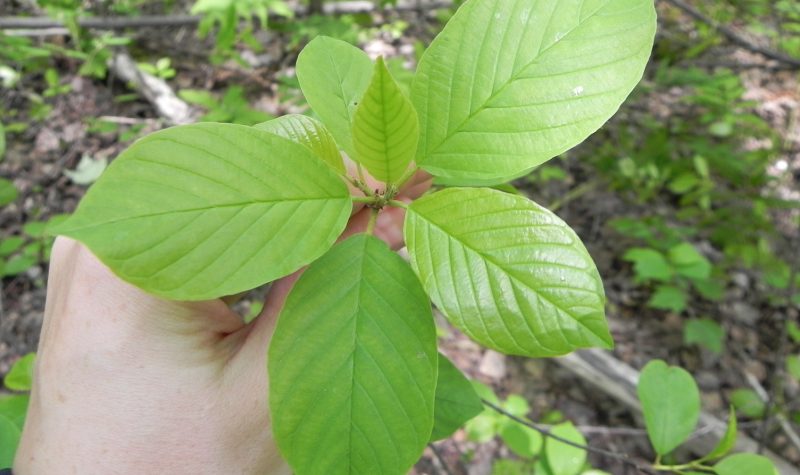The Nature Conservancy’s stewardship team has put out a call for volunteers to go to the Atlantic Wildlife Institute in Cookville this Saturday from 10am to 1pm, to help get rid of an invasive shrub that is strangling out other native species.
Aaron Dowding, New Brunswick Stewardship Manager with the Nature Conservancy of Canada, is hoping many hands will make light work in an effort to control glossy buckthorn in areas along the Tantramar River that pass through AWI’s 70 acre property in Cookville. The property has been under a conservation easement with the Nature Conservancy of Canada since 2009, and makes up part of the conservancy’s Chignecto Isthmus Nature Reserve.
CHMA called up Dowding to find about more about Saturday’s work party, and glossy buckthorn.
Glossy buckthorn is not actually thorny, so volunteers don’t need special equipment, but Dowding recommends bringing a good pair of gloves, a water bottle, and a lunch.
People wanting to participate can contact Caroline Blakely via email (caroline.blakely at natureconservancy.ca) or register online at www.conservationvolunteers.ca until noon Friday.
Glossy buckthorn was introduced to Canada about a century ago, says Dowding, as an ornamental plant that attracts birds. Unfortunately its popularity with birds also helps it spread its seeds and propagate easily, and as the plant moved into wild forests it took over the understory and mid-canopy, says Dowding.
“It forms such dense canopy and thickets in our forests that native plants and other shrubs get pushed out,” he says. “They can’t reproduce, they can’t grow, and the wildlife that depends on those native plants and shrubs, they end up getting pushed out as well. So we get a loss in the native biodiversity in our forests, and along the edges of wetlands, where this plant tends to grow.”
Dowding says that removing glossy buckthorn can be tricky, because it can be easily confused with the native chokecherry bush. “To the untrained eye, you could end up actually working on a native species,” says Dowding. “So it’s best to get some advice on whether you have glossy buckthorn and Nature Conservancy can quickly help with that.”
And once you have identified it, it’s not simply a case of cutting down glossy buckthorn to get rid of it, since larger saplings could sprout from their stumps.

“If the sapling is really small, like the size of your pinky finger in diameter, you can probably pull it right out,” says Dowding. “If it’s a larger tree, you want to girdle it,” by cutting a deep ring into the bark around the trunk.
The work party on Saturday will have use of an extractigator, a specialized hand tool for removing invasives such as buckthorn, contributed by the Nature Trust of New Brunswick. Staff with the New Brunswick Invasive Species Council and the Atlantic Wildlife Institute will also participate.
“It’s really a collaborative type of day, and we’d love it if folks from the area would come out and lend us a hand,” says Dowding. “Many hands make light work.”



